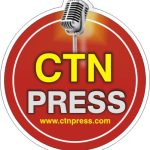MULTIPLE-CHOICE QUESTIONS WITH ANSWERS RELATED TO TRADING ACCOUNT; PROFIT AND LOSS ACCOUNT; INCOME AND EXPENDITURE ACCOUNT
What type of organization typically prepares a Trading Account, Profit and Loss Account, and Income and Expenditure Account?
A) Sole Proprietorship
B) Partnership Firm
C) Joint Stock Company
D) All of the above
Answer: D) All of the above
Which of the following is true about a Trading Account?
A) It includes only revenue transactions.
B) It shows the financial position of a company.
C) It records all direct expenses.
D) It summarizes the buying and selling activities of goods.
Answer: D) It summarizes the buying and selling activities of goods.
Profit and Loss Account is prepared to ascertain:
A) Gross Profit or Loss
B) Net Profit or Loss
C) Both Gross and Net Profit
D) Neither Gross nor Net Profit
Answer: B) Net Profit or Loss
Which of the following items would be found in the Income and Expenditure Account of a non-profit organization?
A) Sales Revenue
B) Cost of Goods Sold
C) Donations Received
D) Interest Paid
Answer: C) Donations Received
The main purpose of preparing a Profit and Loss Account is to:
A) Determine the financial position of a company
B) Ascertain the net profit or loss of a company
C) Record all revenue transactions
D) Analyze the liquidity position of a company
Answer: B) Ascertain the net profit or loss of a company
In the context of a Trading Account, the term “Closing Stock” refers to:
A) Stock that has been sold but not yet delivered
B) Stock that has been purchased but not yet paid for
C) Stock that remains unsold at the end of the accounting period
D) Stock that has been damaged and is no longer usable
Answer: C) Stock that remains unsold at the end of the accounting period
Which of the following accounts would not appear in the Income and Expenditure Account of a non-profit organization?
A) Donations Received
B) Interest Paid
C) Sales Revenue
D) Membership Fees Received
Answer: C) Sales Revenue
The format of a Trading Account is similar to which other financial statement?
A) Balance Sheet
B) Cash Flow Statement
C) Statement of Changes in Equity
D) Income Statement
Answer: D) Income Statement
Which of the following is true regarding the Trading Account of a manufacturing company?
A) It includes only direct expenses.
B) It shows the difference between revenue and expenses.
C) It includes the cost of goods manufactured.
D) It summarizes all financial transactions.
Answer: C) It includes the cost of goods manufactured.
In the context of a Profit and Loss Account, what does “Depreciation” refer to?
A) Increase in the value of an asset
B) Loss due to theft of assets
C) Decrease in the value of an asset over time
D) Gain from the sale of assets
Answer: C) Decrease in the value of an asset over time
Which of the following would be considered an expense in the Income and Expenditure Account of a non-profit organization?
A) Interest Received
B) Donations Received
C) Rent Paid
D) Dividends Received
Answer: C) Rent Paid
The closing balance of the Profit and Loss Account is transferred to which account?
A) Trading Account
B) Balance Sheet
C) Income and Expenditure Account
D) Cash Book
Answer: B) Balance Sheet
Which of the following would be recorded in the Profit and Loss Account of a trading company?
A) Subscription Fees
B) Sales Revenue
C) Membership Dues
D) Grants Received
Answer: B) Sales Revenue
In a Trading Account, which of the following represents the difference between the cost of goods sold and the net sales?
A) Gross Profit
B) Net Profit
C) Gross Loss
D) Net Loss
Answer: A) Gross Profit
The main objective of preparing an Income and Expenditure Account is to:
A) Determine the financial position of the organization
B) Ascertain the net profit or loss of the organization
C) Record all capital transactions of the organization
D) Analyze the solvency of the organization
Answer: B) Ascertain the net profit or loss of the organization
What does the term “Cost of Goods Sold” refer to in a Trading Account?
A) Cost of purchasing goods for resale
B) Cost of manufacturing goods for resale
C) Cost of goods remaining unsold
D) Cost of goods purchased but not yet paid for
Answer: A) Cost of purchasing goods for resale
Which of the following items would not appear in the Profit and Loss Account of a manufacturing company?
A) Raw Material Purchases
B) Factory Rent
C) Sales Revenue
D) Advertising Expenses
Answer: C) Sales Revenue
What is the primary source of revenue for a non-profit organization, as reflected in its Income and Expenditure Account?
A) Sales of goods or services
B) Donations and grants
C) Interest income
D) Membership fees
Answer: B) Donations and grants
Which of the following statements regarding the preparation of a Trading Account is correct?
A) It includes both direct and indirect expenses.
B) It shows the net profit or loss of a business.
C) It includes only expenses related to manufacturing.
D) It summarizes the trading activities of a business.
Answer: D) It summarizes the trading activities of a business.
Which financial statement would include the closing balance of the Profit and Loss Account?
A) Balance Sheet
B) Cash Flow Statement
C) Income and Expenditure Account
D) Trial Balance
Answer: A) Balance Sheet
In the context of a Profit and Loss Account, what does “Operating Expenses” refer to?
A) Expenses incurred in the production process
B) Expenses related to the day-to-day operations of a business
C) Expenses associated with the purchase of assets
D) Expenses incurred for promotional activities
Answer: B) Expenses related to the day-to-day operations of a business
Which of the following would not be included in the Trading Account of a service-oriented business?
A) Cost of goods sold
B) Salaries and wages
C) Rent for office space
D) Advertising expenses
Answer: A) Cost of goods sold
The surplus or deficit shown in the Income and Expenditure Account of a non-profit organization is transferred to which account?
A) Profit and Loss Account
B) Reserve Fund
C) General Fund
D) Trading Account
Answer: C) General Fund
Which of the following would be considered a direct expense in a Trading Account?
A) Administrative salaries
B) Factory rent
C) Sales commissions
D) Office supplies
Answer: B) Factory rent
What does the term “Gross Profit” represent in a Trading Account?
A) Profit after deducting all expenses
B) Profit before deducting operating expenses
C) Profit before deducting cost of goods sold
D) Profit after deducting cost of goods sold
Answer: D) Profit after deducting cost of goods sold
Which of the following financial statements would typically be prepared first during the accounting cycle?
A) Trading Account
B) Profit and Loss Account
C) Income and Expenditure Account
D) Balance Sheet
Answer: A) Trading Account
The excess of revenue over expenses in an Income and Expenditure Account indicates:
A) Gross profit
B) Net profit
C) Gross loss
D) Net loss
Answer: B) Net profit
Which of the following would not be included in the Income and Expenditure Account of a non-profit organization?
A) Sales revenue
B) Donations received
C) Subscription fees
D) Rent received
Answer: A) Sales revenue
In a Profit and Loss Account, which of the following items would be classified as “Other Income”?
A) Cost of goods sold
B) Rent received
C) Wages paid
D) Advertising expenses
Answer: B) Rent received
Which financial statement would include the opening balance of the Profit and Loss Account?
A) Trading Account
B) Balance Sheet
C) Income and Expenditure Account
D) Trial Balance
Answer: D) Trial Balance
Which of the following would be considered a revenue item in the Income and Expenditure Account of a non-profit organization?
A) Purchase of furniture
B) Donation for a specific project
C) Payment of utility bills
D) Sale of old equipment
Answer: B) Donation for a specific project
The closing stock figure from the Trading Account is transferred to which account?
A) Balance Sheet
B) Income and Expenditure Account
C) Profit and Loss Account
D) Cash Book
Answer: A) Balance Sheet
Which of the following is a contra account to the Trading Account?
A) Sales Account
B) Purchase Account
C) Capital Account
D) Rent Account
Answer: B) Purchase Account
Which of the following represents the difference between total revenue and total expenses in the Income and Expenditure Account?
A) Gross Profit
B) Net Profit
C) Gross Loss
D) Net Loss
Answer: B) Net Profit
Which of the following would not be included in the Profit and Loss Account of a manufacturing company?
A) Cost of goods manufactured
B) Factory rent
C) Sales revenue
D) Direct labor expenses
Answer: A) Cost of goods manufactured
Which of the following would be considered a direct income in a Trading Account?
A) Interest received
B) Sales revenue
C) Rent received
D) Dividend income
Answer: B) Sales revenue
The excess of expenses over revenue in an Income and Expenditure Account indicates:
A) Gross profit
B) Net profit
C) Gross loss
D) Net loss
Answer: D) Net loss
What is the purpose of preparing a Trading Account?
A) To calculate the net worth of a business
B) To determine the financial position of a business
C) To summarize the trading activities of a business
D) To analyze the cash flow of a business
Answer: C) To summarize the trading activities of a business
In a Profit and Loss Account, which of the following would be classified as “Other Expenses”?
A) Cost of goods sold
B) Wages paid
C) Interest received
D) Sales revenue
Answer: B) Wages paid
Which of the following would not be included in the Income and Expenditure Account of a non-profit organization?
A) Donations received
B) Membership fees
C) Sales revenue
D) Grants received
Answer: C) Sales revenue
What is the primary source of income for a non-profit organization, as reflected in its Income and Expenditure Account?
A) Sales revenue
B) Donations received
C) Interest income
D) Rental income
Answer: B) Donations received
Which of the following would be included in the Trading Account of a manufacturing company?
A) Administrative expenses
B) Sales revenue
C) Factory rent
D) Cost of goods manufactured
Answer: D) Cost of goods manufactured
In the context of a Profit and Loss Account, what does “Operating Income” refer to?
A) Income earned from investments
B) Income from day-to-day business operations
C) Income from the sale of assets
D) Income from fundraising activities
Answer: B) Income from day-to-day business operations
Which financial statement would include the opening and closing balances of the Trading Account?
A) Balance Sheet
B) Cash Flow Statement
C) Income Statement
D) Statement of Changes in Equity
Answer: A) Balance Sheet
The excess of revenue over expenses in an Income and Expenditure Account is referred to as:
A) Gross profit
B) Net profit
C) Gross loss
D) Net loss
Answer: B) Net profit
Which of the following would not be included in the Trading Account of a service-oriented business?
A) Cost of goods sold
B) Rent for office space
C) Advertising expenses
D) Salaries and wages
Answer: A) Cost of goods sold
In the context of a Profit and Loss Account, what does “Other Expenses” refer to?
A) Expenses incurred in the production process
B) Expenses related to day-to-day operations
C) Miscellaneous expenses not categorized elsewhere
D) Expenses related to the purchase of assets
Answer: C) Miscellaneous expenses not categorized elsewhere
Which of the following would be considered a direct expense in the Income and Expenditure Account of a non-profit organization?
A) Rent paid for office space
B) Salaries of administrative staff
C) Cost of goods sold
D) Expenses related to a specific program
Answer: D) Expenses related to a specific program
What is the purpose of preparing an Income and Expenditure Account for a non-profit organization?
A) To determine the profit or loss of the organization
B) To analyze the liquidity position of the organization
C) To record the income and expenses of the organization
D) To calculate the net worth of the organization
Answer: C) To record the income and expenses of the organization
Which of the following financial statements provides a summary of a company’s revenues and expenses over a specific period?
A) Balance Sheet
B) Income Statement
C) Cash Flow Statement
D) Statement of Changes in Equity
Answer: B) Income Statement


